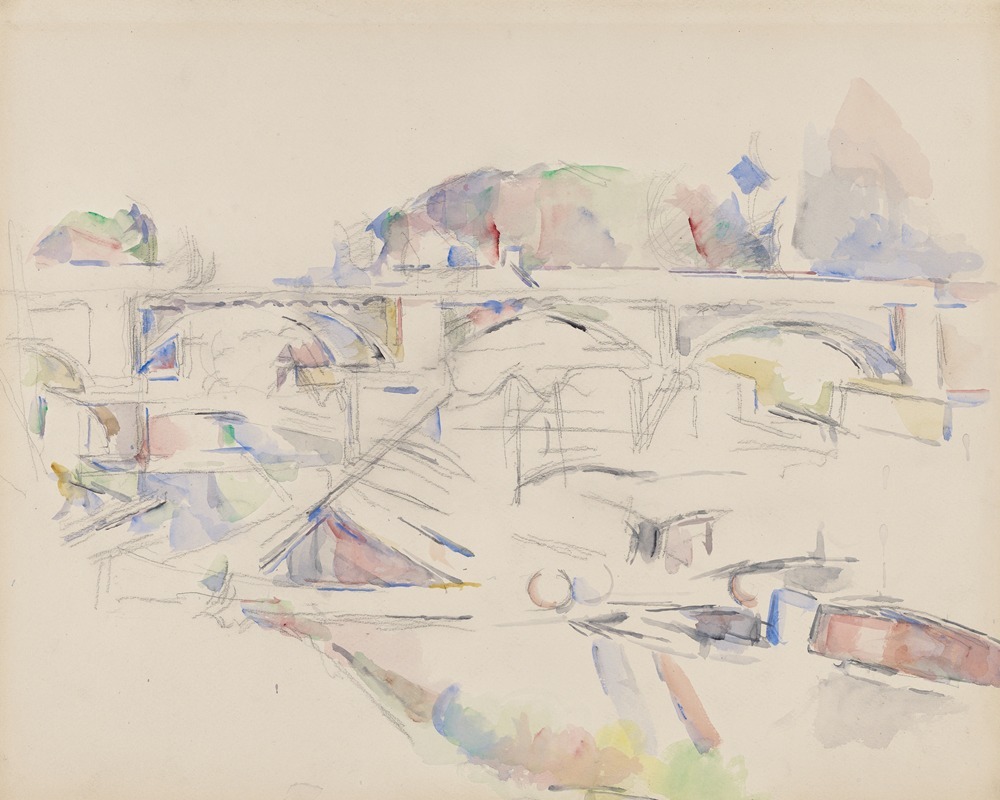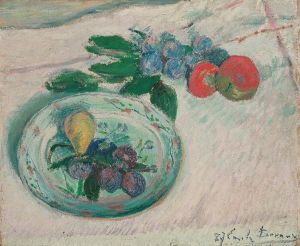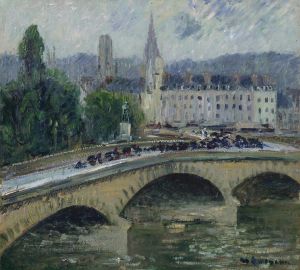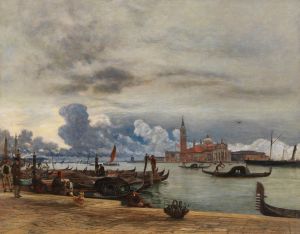
View of a Bridge
A hand-painted replica of Paul Cézanne’s masterpiece View of a Bridge, meticulously crafted by professional artists to capture the true essence of the original. Each piece is created with museum-quality canvas and rare mineral pigments, carefully painted by experienced artists with delicate brushstrokes and rich, layered colors to perfectly recreate the texture of the original artwork. Unlike machine-printed reproductions, this hand-painted version brings the painting to life, infused with the artist’s emotions and skill in every stroke. Whether for personal collection or home decoration, it instantly elevates the artistic atmosphere of any space.
Paul Cézanne, a French Post-Impressionist painter, is renowned for his distinctive approach to painting that laid the groundwork for the transition from 19th-century artistic concepts to the radically different world of 20th-century art. One of his notable works is "View of a Bridge," which exemplifies his innovative techniques and unique perspective.
"View of a Bridge" is an oil painting created by Cézanne during the late 19th century. The exact date of the painting is not definitively known, but it is generally placed within the period when Cézanne was deeply engaged in exploring landscapes and the interplay of natural forms. This painting is a testament to his fascination with the structural elements of the landscape and his commitment to capturing the essence of the scene through his distinctive brushwork and color palette.
The painting depicts a serene landscape featuring a bridge, which is a recurring motif in Cézanne's work. The bridge serves as a focal point, drawing the viewer's eye into the composition and creating a sense of depth and perspective. Cézanne's treatment of the bridge and its surroundings reflects his interest in the geometric shapes underlying natural forms. The bridge is rendered with a combination of solid, almost architectural lines and softer, more fluid brushstrokes that suggest the textures of the surrounding environment.
Cézanne's use of color in "View of a Bridge" is particularly noteworthy. He employs a palette of greens, blues, and earth tones to convey the natural beauty of the scene. The colors are applied in a way that emphasizes the interplay of light and shadow, creating a dynamic and vibrant composition. Cézanne's technique of building up color through small, individual brushstrokes, known as "constructive brushwork," is evident in this painting. This method allows him to create a sense of volume and structure while maintaining a lively surface texture.
The composition of "View of a Bridge" reflects Cézanne's interest in the balance between order and spontaneity. The painting is carefully structured, with the bridge and its reflection in the water creating a harmonious symmetry. At the same time, the natural elements, such as the trees and foliage, are depicted with a sense of movement and vitality. This balance between the constructed and the organic is a hallmark of Cézanne's work and contributes to the enduring appeal of his landscapes.
"View of a Bridge" is housed in a private collection, which limits its accessibility to the public. However, it has been featured in various exhibitions and publications, allowing art enthusiasts and scholars to study and appreciate Cézanne's mastery. The painting is an excellent example of how Cézanne's innovative approach to form, color, and composition influenced subsequent generations of artists and helped pave the way for modern art movements such as Cubism and Fauvism.
In summary, "View of a Bridge" by Paul Cézanne is a significant work that showcases the artist's unique approach to landscape painting. Through his use of color, brushwork, and composition, Cézanne captures the essence of the scene while also exploring the underlying geometric structures of the natural world. This painting is a testament to Cézanne's enduring influence on the development of modern art.


















